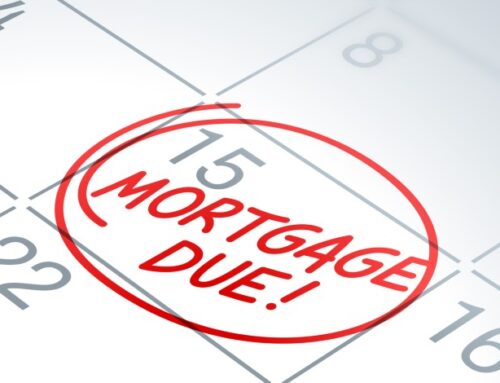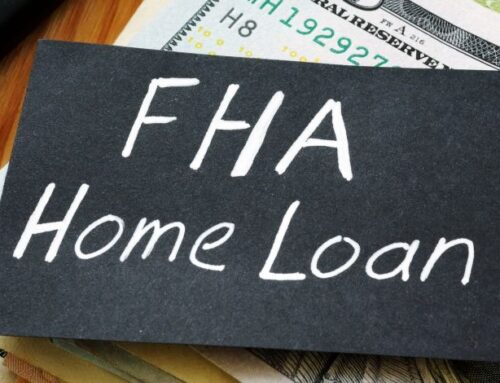Refinancing a mortgage loan can be a wise financial decision when executed properly. Whether you’re looking to lower your interest rate, consolidate high-interest debt, pull out cash from the home’s equity to finance a renovation project or eliminate mortgage insurance, refinancing your current mortgage may be worthwhile.
With various types of mortgage refinancing options available on the market, homeowners are often faced with the challenge of choosing the right one based on their needs and goals. Homeowners should consider what type of mortgage they currently have, the property’s value, how much equity has been built in the home and whether or not mortgage insurance is involved.
Since every borrower has different financial goals, there is no one-size-fits-all approach to selecting a mortgage refinance option. Keep reading to find out about the common types of mortgage refinancing options available and how you can determine which one is the best fit for you.
6 Types Of Mortgage Refinance Loans
There are numerous types of mortgage refinancing options available. Choosing the best one depends on your current financial situation and long-term financial goals. Here are the six most common types of mortgage refinancing and their primary features.
1. Rate and term refinance
A rate and term refinance allows borrowers to replace their current mortgage with a new one that generally has a lower interest rate and different term. The rate and term option is ideal when interest rates are low, and the borrower has the opportunity to secure a favorable term from the lender.
If you pursue a rate and term refinance, it’s important to understand the amount you owe will remain the same, but depending on the adjustments, your monthly payment may be lower. As a result, you may be able to pay off your mortgage sooner than anticipated.
Let’s take a closer look at how a rate and term refinance may look in practice. For example, you have 10 years remaining on your current 30-year home loan. Refinancing to another 30-year fixed-rate mortgage with a lower interest rate will reduce your monthly payment, but you’ll pay more in interest because you’re restarting the loan term. It’s beneficial to lower the interest rate and refinance to a shorter term.
Below is an example of a rate and term refinance on a $250,000 loan at a 3.5% interest rate with a 30-year, 15-year and 10-year fixed-rate home loan.
| 30-Year Fixed-Rate | 15-Year Fixed-Rate | 10-Year Fixed-Rate | |
|---|---|---|---|
| Monthly payment | $1,122.61 | $1,787.21 | $2,472.15 |
| Total interest paid | $154,140.78 | $71,697.03 | $46,657.51 |
| Total cost of the loan | $404,140.78 | $321,697.03 | $296,657.51 |
The 10-year fixed-rate option is an ideal option for you if your goal is to reduce the interest throughout the duration of the loan. You may receive a better interest rate on a shorter loan. Therefore, cutting your monthly payments and helping to reduce your total interest.
Check out Arizona Central Credit Union’s Refinance Calculator to see how refinancing will affect you.
2. Cash-out refinance
A cash-out refinance is where you tap the equity within their home to receive a sum of cash. This type of refinancing also allows you to lower your interest rate. A cash-out refinance follows the same process as a rate and term refinance, but you’ll receive a check for the difference at closing. With a cash-out refinance, the new balance is generally higher than the original because it shows the amount borrowed along with any closing costs.
A cash-out refinance does not add another monthly payment since the new loan replaces the old one. However, the monthly payment may be slightly higher because of the new contract. If you’re considering a cash-out refinance, it’s imperative to fully understand the details outlined in the agreement to adjust your budget accordingly.
Lenders will generally not allow you to borrow more than 80% of the home’s equity, which leaves the remaining 20% connected to the property.
For instance, if the home’s value is appraised at $425,000 and you owe $150,000, the maximum amount you can receive is $190,000.
The cash-out refinance option is ideal for borrowers looking to make home improvements or need additional emergency funds at a lower interest rate.
3. Cash-in refinance
A cash-in refinance is the opposite of a cash-out refinance. With a cash-in refinance, the borrower makes a lump-sum payment rather than taking the cash out of the home’s equity. This refinancing approach will help you reduce your loan-to-value ratio (LTV) and increase your equity in the home. As a result, your monthly payments may decrease, or you may receive a lower interest rate.
This type of loan may be ideal for borrowers who don’t have much equity built within their home or if their mortgage is considered underwater.
4. Short refinance
A short refinance is a particular option for homeowners who have defaulted on mortgage payments and nearing foreclosure. This type of refinancing will replace your current mortgage with a new loan with a smaller balance to lower the monthly payment that you can reasonably afford.
A short refinance benefits you and the lender because you’ll remain the property owner, and the lender will lose less money than if the house were to be foreclosed and go through a short sale.
A short refinance may help you avoid foreclosure but can severely damage your credit. It’s advised to consult with your lender to see if this is the best option for you.
5. Streamline refinance
Streamline refinances are a great way to receive a lower interest rate on FHA, VA or USDA loans. As the name suggests, the process is streamlined with hardly any paperwork and no credit checks or appraisals.
Each government-insured loan has different requirements to complete a streamline refinance:
- FHA streamline refinance: An excellent option for FHA loan borrowers to lower their monthly payments. There are two main types of FHA streamline refinances. Credit-qualifying, where the lender will review your credit score and debt-to-income (DTI) ratio and non-credit-qualifying, where you can go through the standard streamline process.
- VA streamline refinance (VA IRRRL): If you’re an active military or veteran with a VA loan, you may be eligible to go through a streamline refinance. With a VA IRRRL, you may be able to lower your monthly payment and interest rate, change the term or switch from an adjustable-rate mortgage (ARM) to a fixed-rate loan.
- USDA streamline refinance: If you have a USDA loan and are considering refinancing, you may be eligible for the USDA streamline refinance program. This option allows borrowers with little equity in the home to possibly lower the interest rate and adjust the term without any additional property appraisal or inspection.
6. No-closing-cost refinance
As the name implies, the no-closing-cost refinance is where the borrower does not pay the closing costs upfront. Rather, the closing costs are paid with higher interest rates or included within the principal amount.
No-closing-cost refinance may be a good option for borrowers who intend to live at that home for a short period of time or if you need the funds to cover other expenses.
How To Determine Which Mortgage Refinance Option Is Right For You
When determining which mortgage refinancing option is ideal, you’ll have to mainly lean on your current financial situation and long-term goals. There are also other factors you should consider. These include:
- The type of mortgage you currently have
- The amount of equity built within the home
- Your credit score
- Your debt-to-income ratio
- Your loan-to-value ratio
We recommend that you consult with your lender to help determine which option is ideal for you. They’ll walk you through all the options they offer and give you insights into different rates and terms.
Refinance Your Mortgage With Arizona Central Credit Union
Refinancing your mortgage can help you financially if done correctly. Refinancing offers you the ability to lower your interest rate, reduce your monthly payment and the opportunity to receive favorable terms.
Are you ready to refinance your mortgage? You can apply via our website or contact us, and one of our mortgage specialists will assist you with additional information.
In the meantime, you can play around with our mortgage refinancing calculator to see how refinancing can benefit you.




